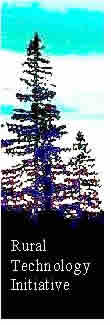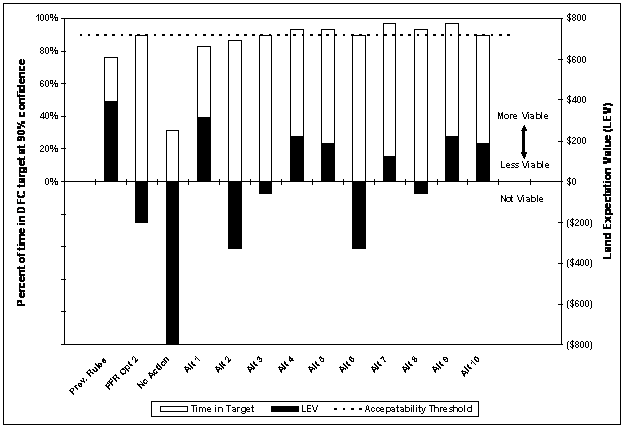 |
 |
 |
 |


It is important that family forests in Washington remain economically viable. Family forests are located in the lowland areas critical to salmon and other riparian habitat. They also interface with the urban and suburban areas providing a buffer between areas of urban sprawl and the industrial forests and public lands further upslope. Coupled with the strong stewardship ethic found in family forestry, these factors put family forests in a unique position to provide for quality riparian habitat and a multitude of other public values. However, these factors also make family forests particularly sensitive to conversion pressures. Close to 100 acres per day of family forestland in Washington have been converted to non-forest use in recent years as urban areas rapidly expand. This conversion rate will be exacerbated if forest management options are no longer economically viable for these landowners. A streamlined process for the development and approval of alternate plans is necessary to facilitate the large number of landowners who could benefit from an alternate plan. The Forest Practice Rules provide for the creation of template prescriptions to simplify the development of alternate plans for common situations (WAC 222-12-0403). Overstocked stands in Western Washington are common, providing a good candidate for templates for preferred alternatives. Douglas-fir plantations are planted at high densities to maximize early growth with the expectation that the density will be reduced through subsequent thinning operations. In riparian areas, these subsequent thinnings are not always possible under the options specified in the FFR. In addition, there is often inadequate economic incentive to thin in these areas when restrictions on future harvest preclude the recovery of the operational investment. This is not only an economic setback for landowners; it also leaves these areas in an unnatural and overly dense condition that inhibits stand development. Thus, an alternate plan template for overstocked stands is an opportunity for both economic relief and riparian habitat improvement.
The first step in developing an alternate plan template is to generate a range of creative management alternatives to address both riparian habitat and economic needs. For overstocked stands, these alternatives should include different thinning strategies throughout the riparian zone. We created 10 example alternatives and simulated them over time using the Landscape Management System (LMS). The simulations were done on a theoretical "riparian acre," which represents a 170' wide riparian area along a 256' stream reach. This riparian acre contained a sample inventory that is representative of a 20-year-old Douglas-fir plantation on site class II stocked at 450-500 trees per acre (TPA). Each of the sample alternatives included a 25' core zone, which is most critical for shade and large woody debris (LWD) recruitment. Depending on the prescription, this zone was either thinned successively to 60 TPA, thinned successively to 25 TPA, or left untouched. Adjacent to the core zone was an additional riparian management area that extended out to 50, 80, or 113 feet. This area was either thinned successively to 25 TPA and then left alone, or it was managed on a 100-year, rotation with multiple thinnings. Once a series of potential management alternatives has been simulated, the adequacy of each alternative must be assessed. The rules require alternate plans to "provide protection for public resources at least equal in overall effectiveness to the protection provided in [the FFR]" (WAC 222-12-0401). One of the biggest challenges in creating viable alternatives is establishing specific criteria that can be used to objectively assess whether or not a prospective template prescription provides the necessary level of resource protection. For Westside streams, the FFR has established a riparian protection and restoration paradigm known as the Desired Future Conditions (DFC). The DFC represent old forest structure, and they are based on a sample of 80 to 300-year-old unmanaged stands known as the DFC dataset. The goal of the management options specified in the FFR is to develop a basal area greater than the mean of this dataset by the time a riparian stand reaches age 140. Working within this paradigm, RTI has expanded on the DFC approach and created a statistically rigorous targeting and assessment procedure (see RTI Fact Sheet #6) that can be used to evaluate potential alternate plans. This procedure addresses multiple parameters (such as stand density, mean diameter, and average height) simultaneously to better discriminate between desirable and undesirable forest structures. It also establishes a target range to account for natural variability in forests. This range can be set for any level of acceptance to provide the appropriate level of discrimination. Using this procedure, potential alternatives can be evaluated over time to see what percent of the time the resulting forest structure falls within the DFC acceptance range. The next step is to combine this assessment with economic analysis to assess whether or not a potential alternative is economically viable. The long-term economic potential of sustainable forest management may be the most important measure of economic viability, as it is most closely related to the motivation to maintain the land as forestland rather than converting to other uses. This can be evaluated by calculating the land expectation value (LEV) for each alternative at an appropriate target rate of return. Figure 1 compares the ten example alternatives with three reference scenarios in terms of both the percentage of time in the DFC target at a 90% acceptance level and LEV at a 5% real rate of return. The three reference scenarios include no action, and "Option 2" in the FFR, and management under the previous rules. The DFC target is based on stand density, mean diameter, and average height of the trees greater than 6" in diameter from the DFC data set. Figure 1 can be used to identify which alternatives can meet the DFC structure targets at least as well as the options specified in the FFR while still maintaining economic viability. In this display, sample alternatives 3-10 meet or exceed FFR Option 2 in providing DFC. Of these alternatives, 4, 5, 7, 9, 10 are economically viable for sustained management. A template prescription based on these five alternatives would meet DFC goals while maintaining economic viability.
To help select from a list of acceptable alternatives or to give additional credibility to a preferred alternative, additional criteria based on specific riparian functions can also be used. For example, using a variant of RTI's large woody debris model (see RTI Fact Sheet #9), acceptable alternatives can be assessed based on their potential to recruit functional pieces of large woody debris ("functional" pieces require a minimum size based on the stream type). Figure 2 shows the volume of functional recruitable large woody debris (FRLWD) for a type 3 stream that is available over time for the five potential alternatives. FFR Option 2 and no action are included for reference. In this case, alternative 5 stands out as a strong candidate, as it provides greater FRLWD over time compared to FFR option 2 and the other potential alternatives.
Alternate plan templates will be an important tool in enabling family forest owners to protect aquatic resources while keeping sustainable forestry economically viable in the long term. It is challenging to create template prescriptions that meet the legislative objective of meeting riparian functions while minimizing the cost to landowners. The assessment procedure provides an objective, science-based method to both develop and evaluate potential prescriptions. Our analysis for overstocked stands suggests that by using the assessment procedure it is indeed possible to develop prescriptions that meet challenging and often conflicting criteria. This procedure can be employed not only for overstocked stands, but for any common situation that could benefit from a template. |





